Elite Edge Deep Dive: Building Posterior Chain Power (Part 2 of 4)
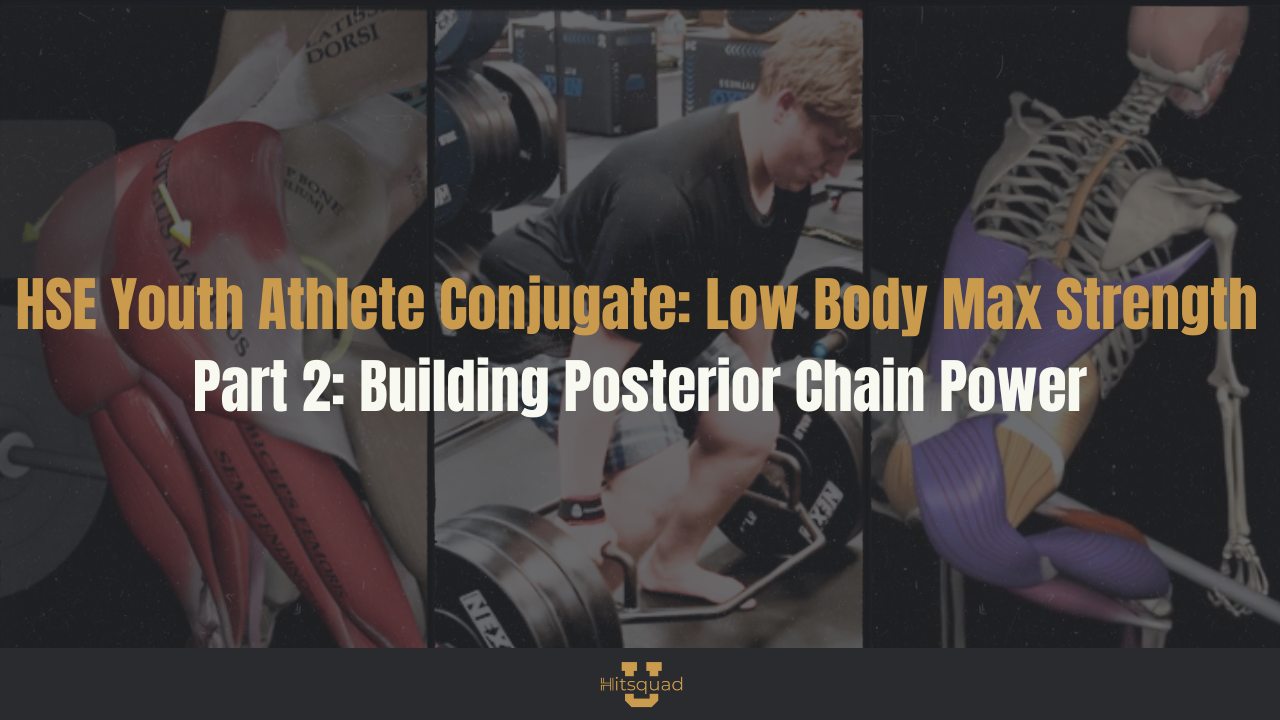
Elite Edge Deep Dive: Building Posterior Chain Power
A strong posterior chain—the glutes, hamstrings, and lower back—is the foundation of elite speed, explosive power, and injury prevention. The HSE Conjugate System for Youth Athletes maximizes posterior chain strength using a scientifically structured Max Strength Lower 2 program.
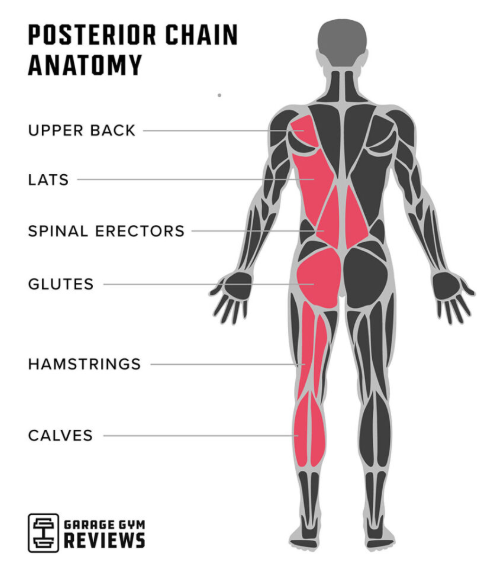
This session incorporates superset methodologies, combining Post-Activation Potentiation (PAP), contrast training, force coupling, and progressive overload to improve strength, speed, and movement efficiency. If you’re an athlete looking to run faster, jump higher, and improve resilience, this breakdown will show you exactly how we program posterior chain power for optimal performance and injury prevention.
The Science Behind Posterior Chain Power
The posterior chain is the powerhouse of athletic movement. Whether sprinting, jumping, or changing direction, strong glutes and hamstrings are essential for:

✅ Force Production – More power in each stride and jump
✅ Speed & Acceleration – Efficient glute activation for sprinting
✅ Injury Prevention – Strong hamstrings stabilize the knees and hips
Scientific research shows that Romanian Deadlifts (RDLs) are one of the most effective exercises for targeting the hamstrings and glutes, making them crucial for developing posterior chain strength. When combined with explosive movements, athletes enhance both maximal strength and speed-strength, creating powerful, resilient movers on the field or court.
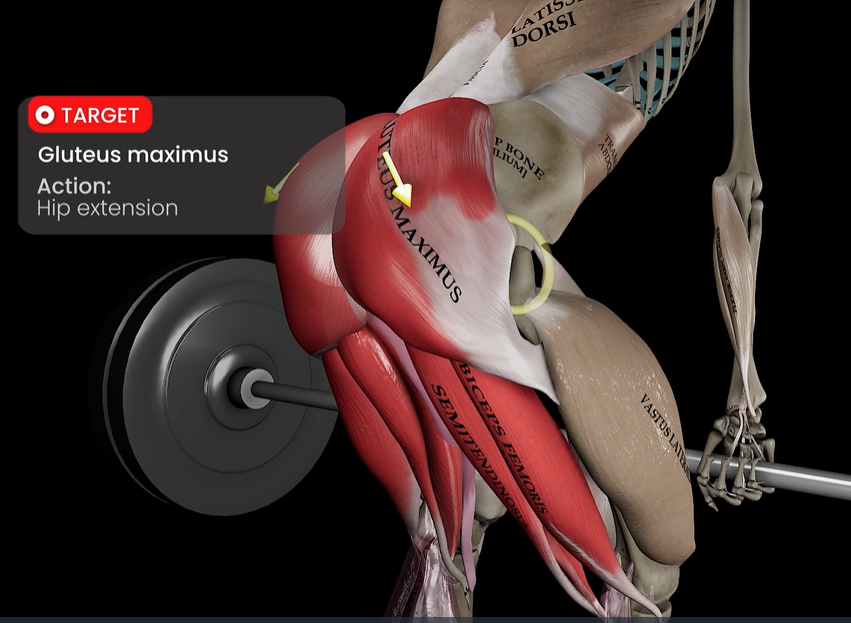
How Supersets Boost Posterior Chain Strength
Each superset in the Max Strength Lower 2 program is designed to maximize neuromuscular efficiency, power transfer, and injury resilience. By integrating heavy bilateral lifts, explosive plyometrics, and unilateral mobility work, we ensure that strength gains translate into sport-specific power and movement efficiency.
Training Methodologies Used:
🔹 Post-Activation Potentiation (PAP): Heavy strength movements prime the CNS, increasing motor unit recruitment for enhanced explosiveness.
🔹 Contrast Training: Pairing heavy lifts with fast movements improves the rate of force development (RFD).
🔹 Force Coupling: Stability and power movements train muscles to work synergistically, improving movement mechanics.
🔹 Elastic Energy Utilization: Plyometrics build reactive strength and reduce ground contact time, key for sprinting and jumping.
These principles combine to optimize strength, speed, and resilience, ensuring that athletes don’t just lift heavier—they move better and perform at a higher level.
Superset Breakdown & Adaptations
Each superset in this program is structured to develop posterior chain power while reinforcing movement efficiency and stability.
Superset 1: Pause Front Squat + Seated Box Jump
|
Exercise |
Loading Type |
Muscles Worked |
Key Adaptation |
|
Pause Front Squat (8,6,5,5,2) |
Max Strength + Isometric Sticking Point |
Quads, glutes, core, spinal erectors |
Improves force absorption, core stability, & mid-range strength |
|
Seated Box Jump (6 reps) |
Explosive SSC Engagement |
Glutes, quads, calves |
Enhances starting strength & concentric power |

🔹 Why It Works:
- PAP Effect: The pause squat increases motor unit recruitment, making the nervous system fire more explosively during jumps.
- Force Transfer: The slow eccentric squat teaches force absorption, improving jump mechanics.
Superset 2: Top Pin Back Squat + Banded Broad Jump
|
Exercise |
Loading Type |
Muscles Worked |
Key Adaptation |
|
Top Pin Back Squat (8,6,5,5,2) |
Partial ROM Overload |
Glutes, hamstrings, quads, spinal erectors |
Develops lockout power & force transfer |
|
Banded Broad Jump (6 reps) |
Accommodating Resistance Explosive Jump |
Glutes, hamstrings, quads, calves |
Increases horizontal force production |
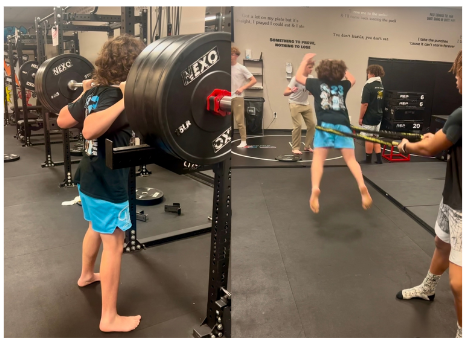
🔹 Why It Works:
- Contrast Training: Heavy squat primes the nervous system, making the broad jump more explosive.
- Force-Velocity Adaptation: Squats build max strength, jumps train fast force application.
- Horizontal Power Focus: Banded jumps reinforce sprinting & agility transfer.
Superset 3: Trap Bar Deadlift + Cossack Squat
|
Exercise |
Loading Type |
Muscles Worked |
Key Adaptation |
|
Trap Bar Deadlift (8,6,5,5,2) |
Max Strength |
Glutes, hamstrings, quads, traps |
Enhances posterior chain strength & triple extension |
|
Cossack Squat (30s hold, 8 reps) |
Unilateral Mobility & Strength |
Adductors, glutes, quads, core |
Improves hip mobility & lateral force absorption |
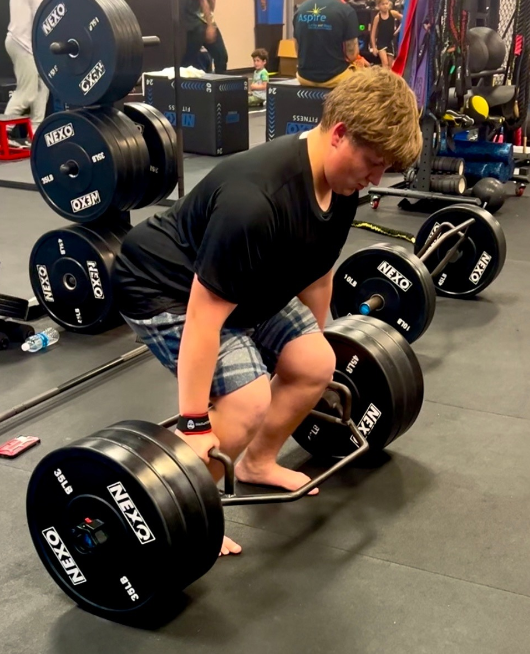
🔹 Why It Works:
- Force Coupling: Deadlifts build bilateral power, Cossack squats reinforce single-leg stability.
- Hip Stability & Resilience: Stronger hip adductors improve sprint mechanics and lateral movement.
- Improved Movement Quality: Helps athletes maintain strong positions under high force loads.
Why This Program is Highly Effective
✅ Optimized Neural Potentiation: Every heavy lift primes the explosive movement to maximize power output.
✅ Balanced Strength & Mobility Development: Heavy bilateral lifts (squat/deadlift) are paired with mobility work (Cossack squat).
✅ Explosive Transfer to Sport: The contrast pairings reinforce ground reaction force efficiency, critical for sprinting, jumping, and cutting.
✅ Injury Prevention & Longevity: Core stability, hip mobility, and force absorption elements reduce overuse injuries.
Key Takeaways
1️⃣ PAP Drives Power Output: Squat + Jump pairings create neuromuscular activation for explosive movements.
2️⃣ Contrast Training Enhances RFD: Fast movements follow strength exercises, ensuring athletes apply force quickly.
3️⃣ Force Coupling Strengthens Stability & Coordination: Heavy movements + mobility ensures athletes maintain control under high force demands.
4️⃣ Sport-Specific Carryover: Improves sprinting, jumping, change of direction, and joint resilience.
Coaches’ Corner: Why Posterior Chain Strength Matters
A weak posterior chain is a major limiting factor in speed, explosiveness, and injury resilience. Studies show that over 65% of hamstring injuries in athletes stem from inadequate strength and mobility training. The HSE Conjugate System for Youth Athletes ensures that posterior chain development is prioritized for:
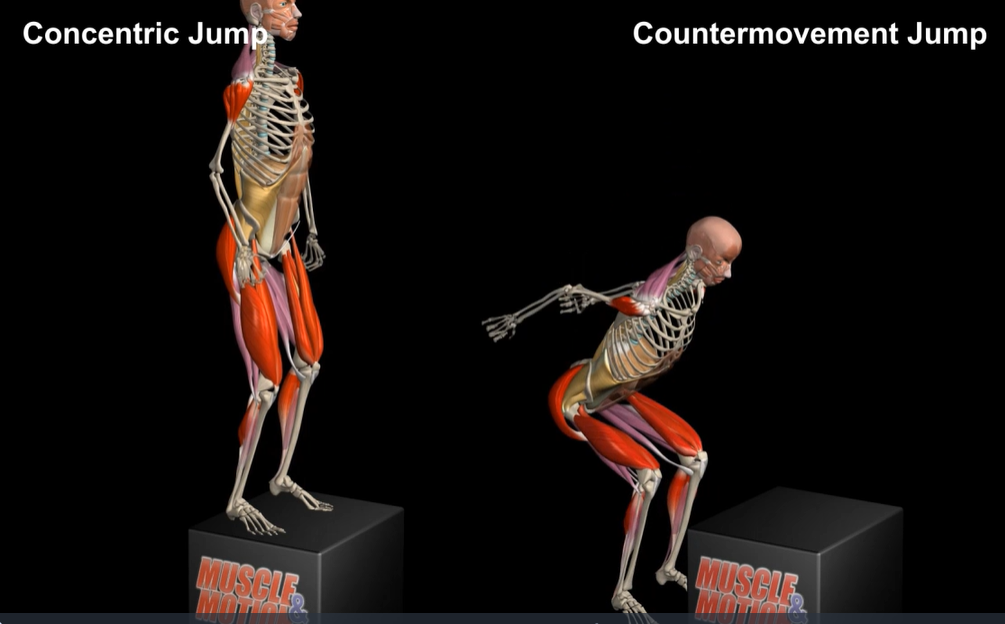
✔ More powerful sprinting & jumping
✔ Better knee & hip stability
✔ Reduced risk of hamstring & lower back injuries
Pro Tip: “Posterior chain strength is the foundation of speed and explosiveness—don’t neglect it.”
Final Thoughts
A stronger posterior chain = a more explosive, resilient athlete. The HSE Conjugate System for Youth Athletes optimizes strength, power, and injury prevention, ensuring that performance gains translate directly to competition.
Join the Movement.

